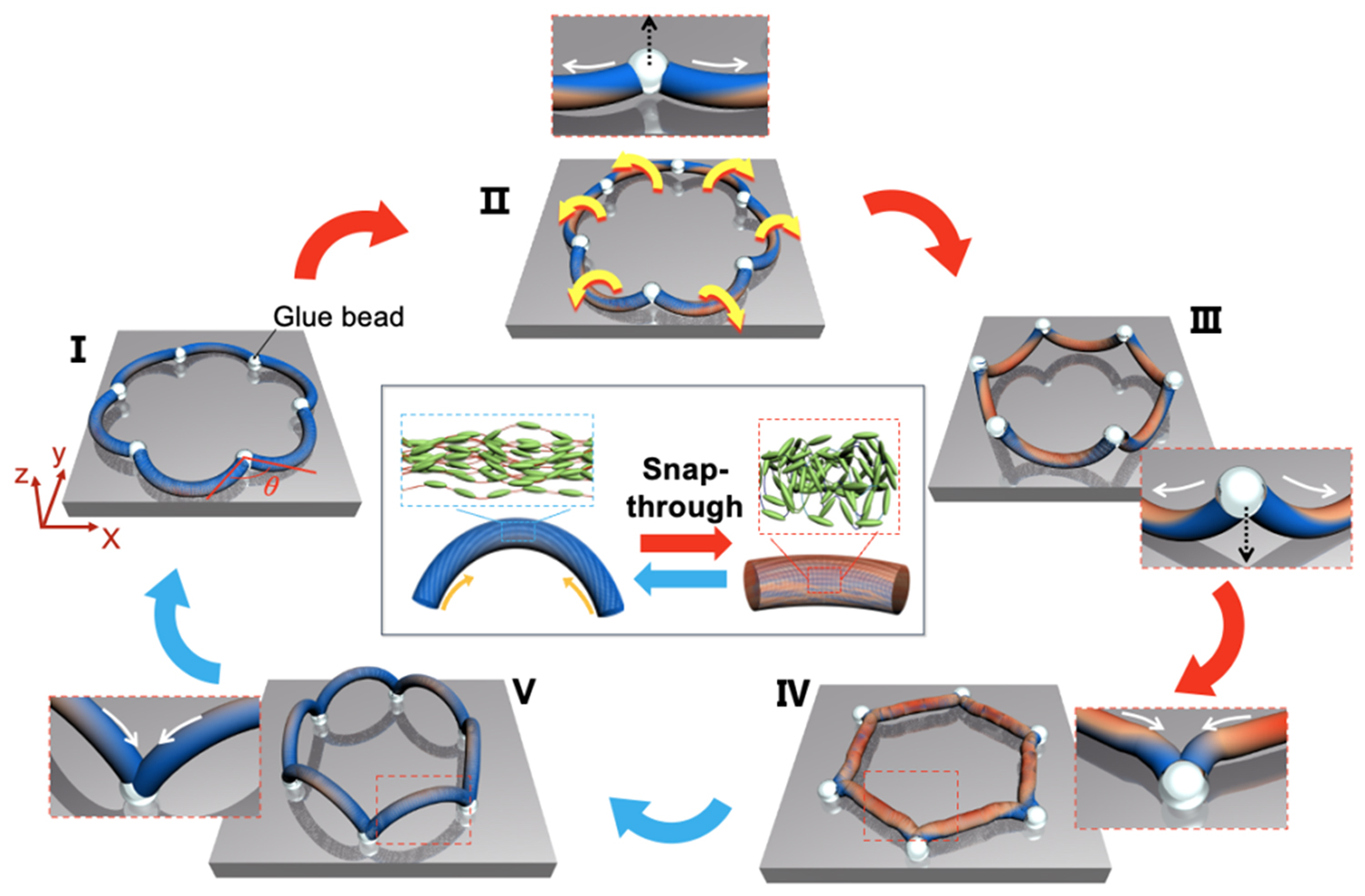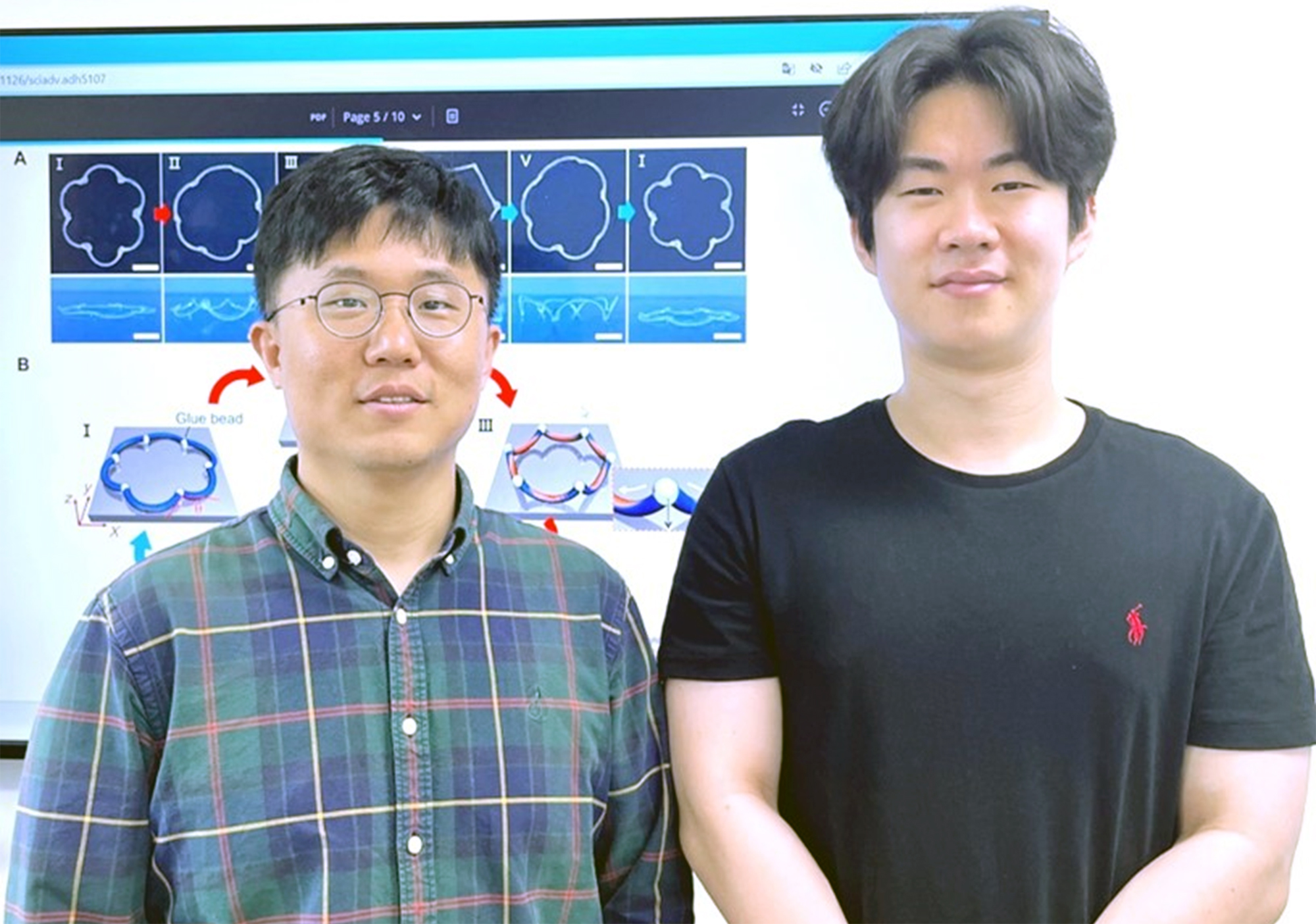연구/산학
PKNU Research 1000
| Kim Dae-Seok | Develop autonomous soft robots using LCE | |||
| 작성자 | 대외협력과 | 작성일 | 2023-06-30 |
| 조회수 | 513 | ||
| Kim Dae-Seok | Develop autonomous soft robots using LCE | |||||
 |
대외협력과 |  |
2023-06-30 |  |
513 |
Autonomous soft robots using LCE developed by PKNU getting attention
- prof. Kim Dae-Seok published a paper in international journal, <Science advances>

△ Figure showing the self-actuated drive of the LCE filament structure connected in the form of a loop.
A team led by professor Kim Dae-Seok (polymer Engineering) from Pukyong National University has developed a soft robot that moves autonomously using a new material called liquid crystal elastomer (LCE), drawing attention from the academic world.
Through joint research with Kim Young-Bin in master's degree, who is currently enrolled in the same department, and professor Shu Yang (dept. of materials engineering) from the university of Pennsylvania, professor Kim developed a soft robot that realizes autonomous and sustainable movement by utilizing the filament structure of LCE, a reactive polymer material.
Soft robots refer to robots made of flexible materials, not metal, so that they can be used in areas closely related to human life or in dangerous conditions instead of humans.
LCE, which can be applied for soft robots, is a smart material that transforms its shape in response to external stimuli such as heat, light, and electromagnetic fields, and has attracted attention in the soft material-based drive systems. However, there was a limitation that the process of contraction and relaxation according to stimulation was very dull, from several seconds to several tens of seconds, and the output, which is the intensity of movement, was also low.
The research team led by professor Kim produced a filament with LCE and then connected the filaments to each other to design a new loop-type actuator, a new geometric connection structure that did not exist before.
As a result of the research team applying thermal stimulation to this actuator, the motion of each filament contracting and relaxing affected other connected filaments and succeeded in inducing a motion phenomenon in which the actuator rotates round and round. The research team named this phenomenon 'snap-through'.
This actuator is expected to be used as a driving device for various devices such as soft robots in the future, as it can continuously produce much faster and higher output than when stimulating the existing LCE itself. In addition, since it can be driven with a small thermal stimulus, it has been shown that energy can be saved if driven in a place where heat loss occurs.
Professor Kim Dae-Seok said, "Synthesis of new materials is still important in manufacturing LCE-based soft robots, but it is meaningful that we have demonstrated that completely new physical phenomena can be induced only by studying the structuring and geometric models of well-established materials."
The paper 'autonomous, untethered gait-like synchronization of lobed loops made from liquid crystal elastomer fibers via spontaneous snap-through' containing the results of this research was recently published in the international journal <science advances> (IF: 14.98).
